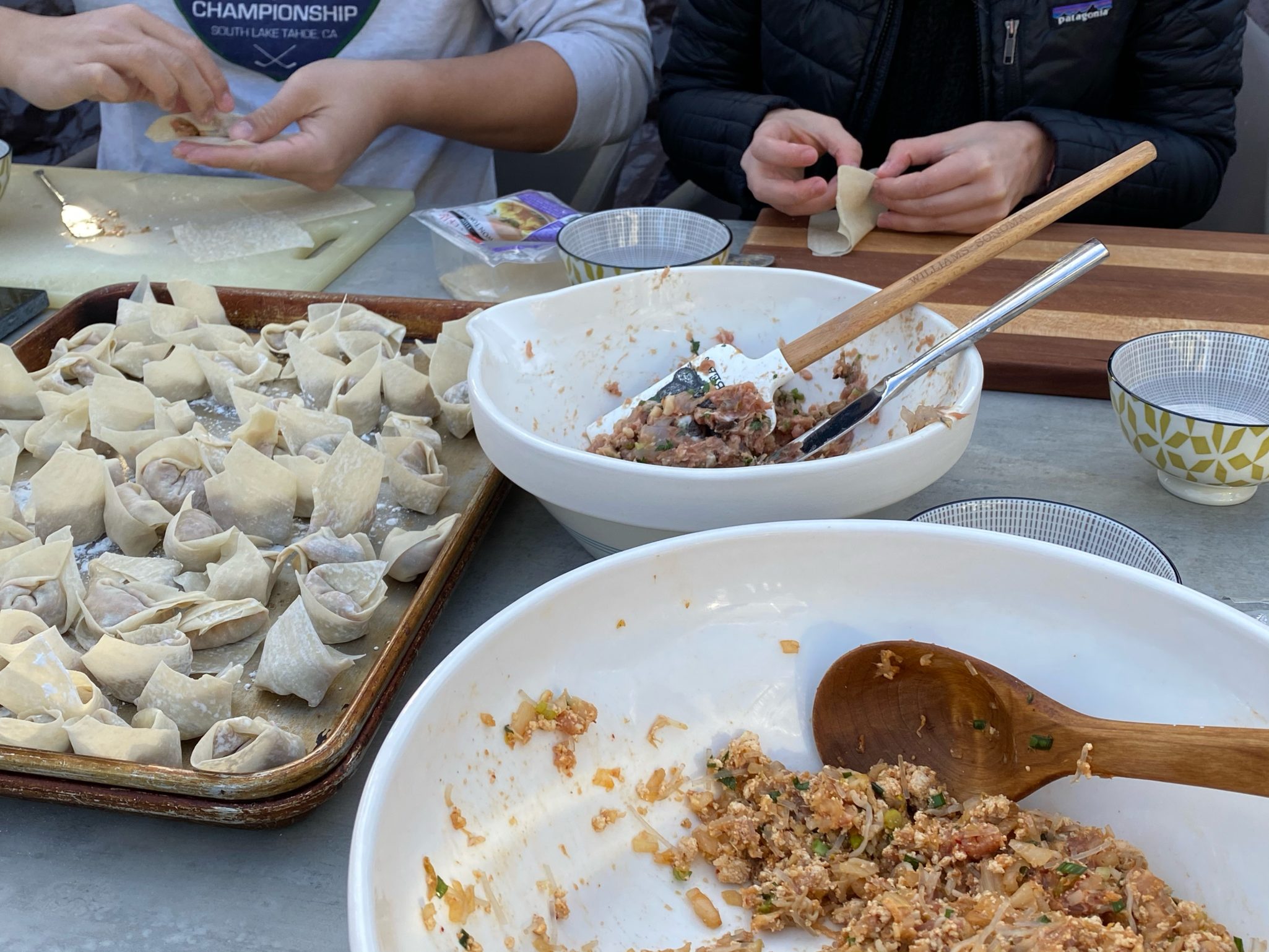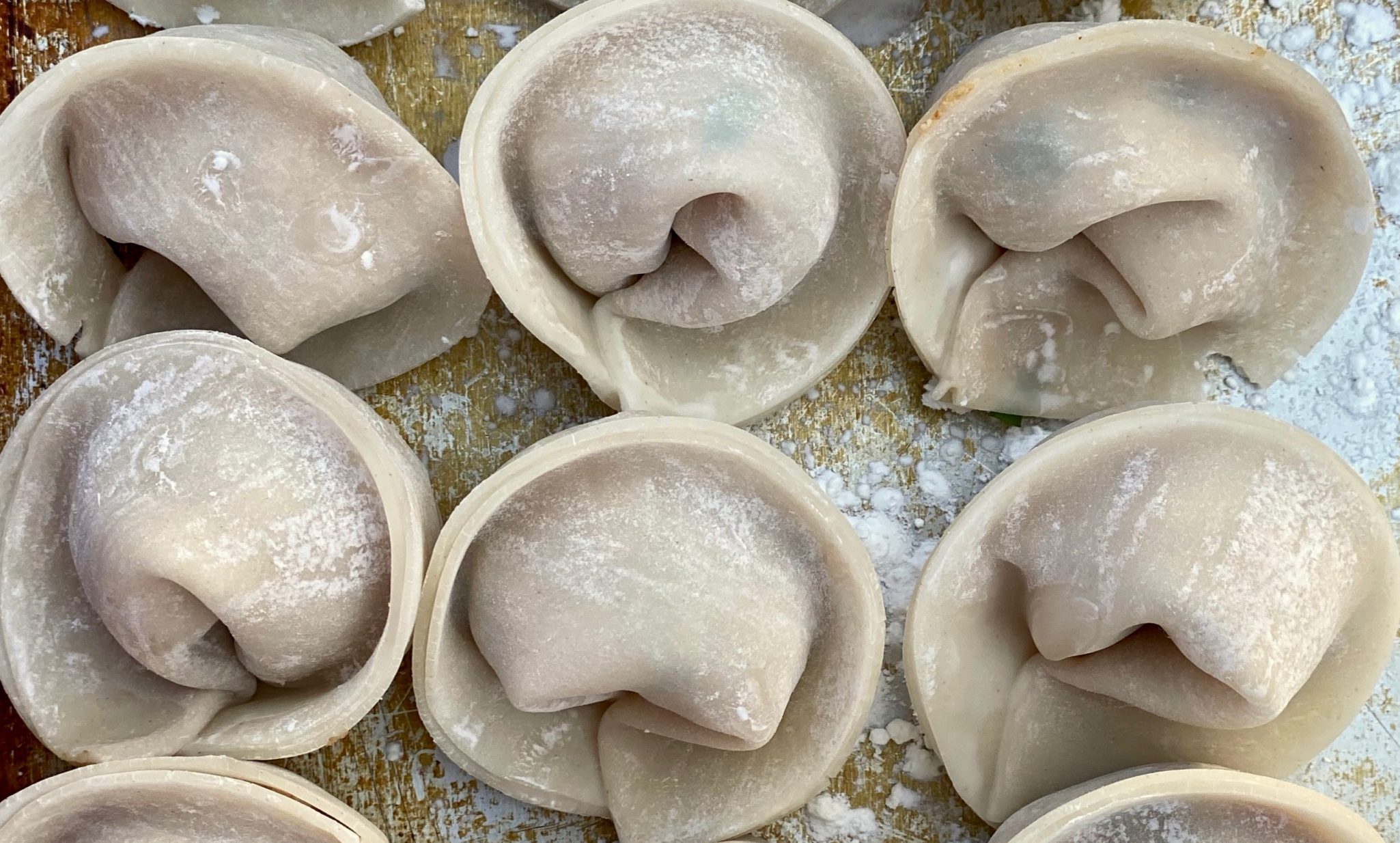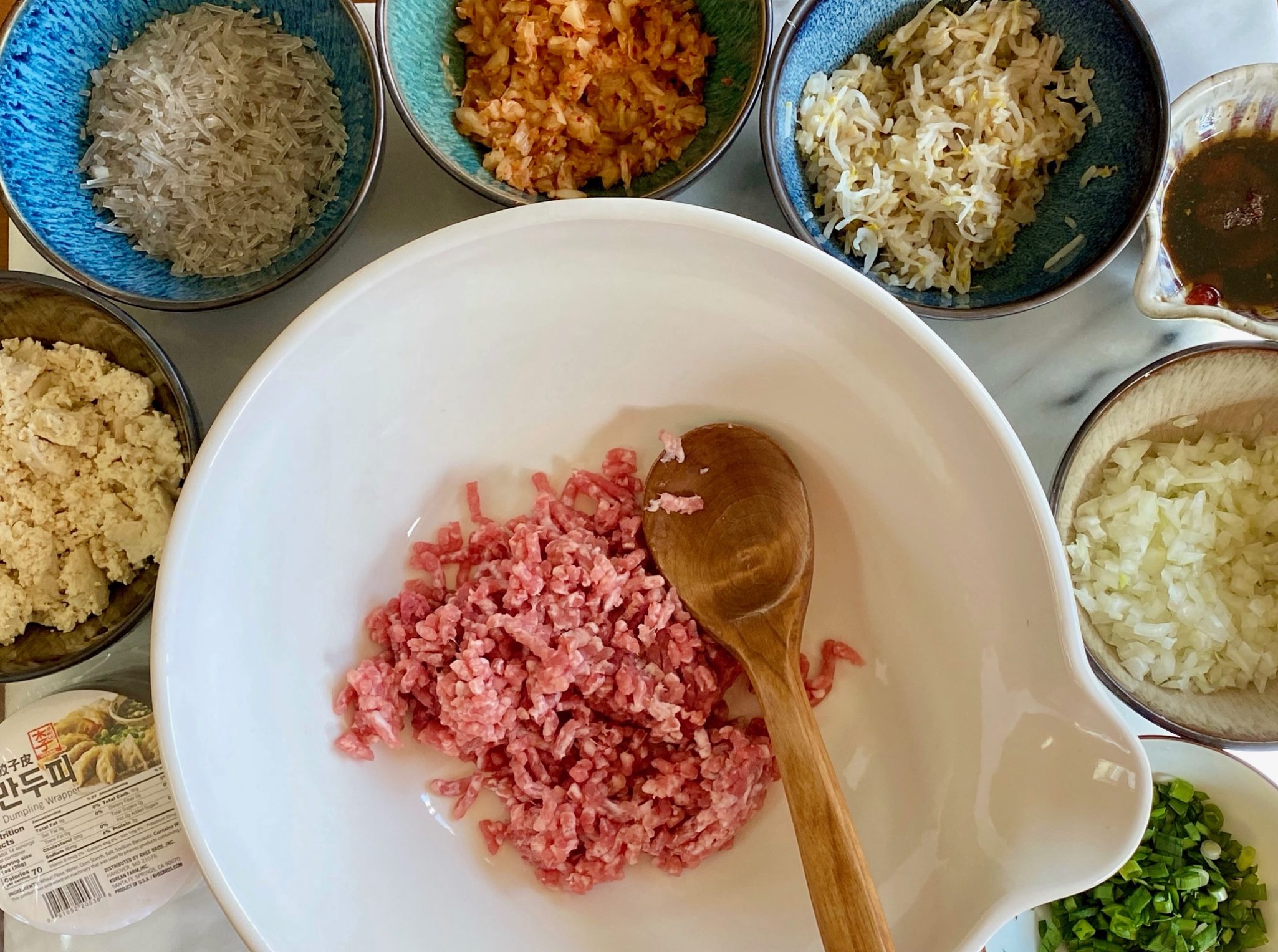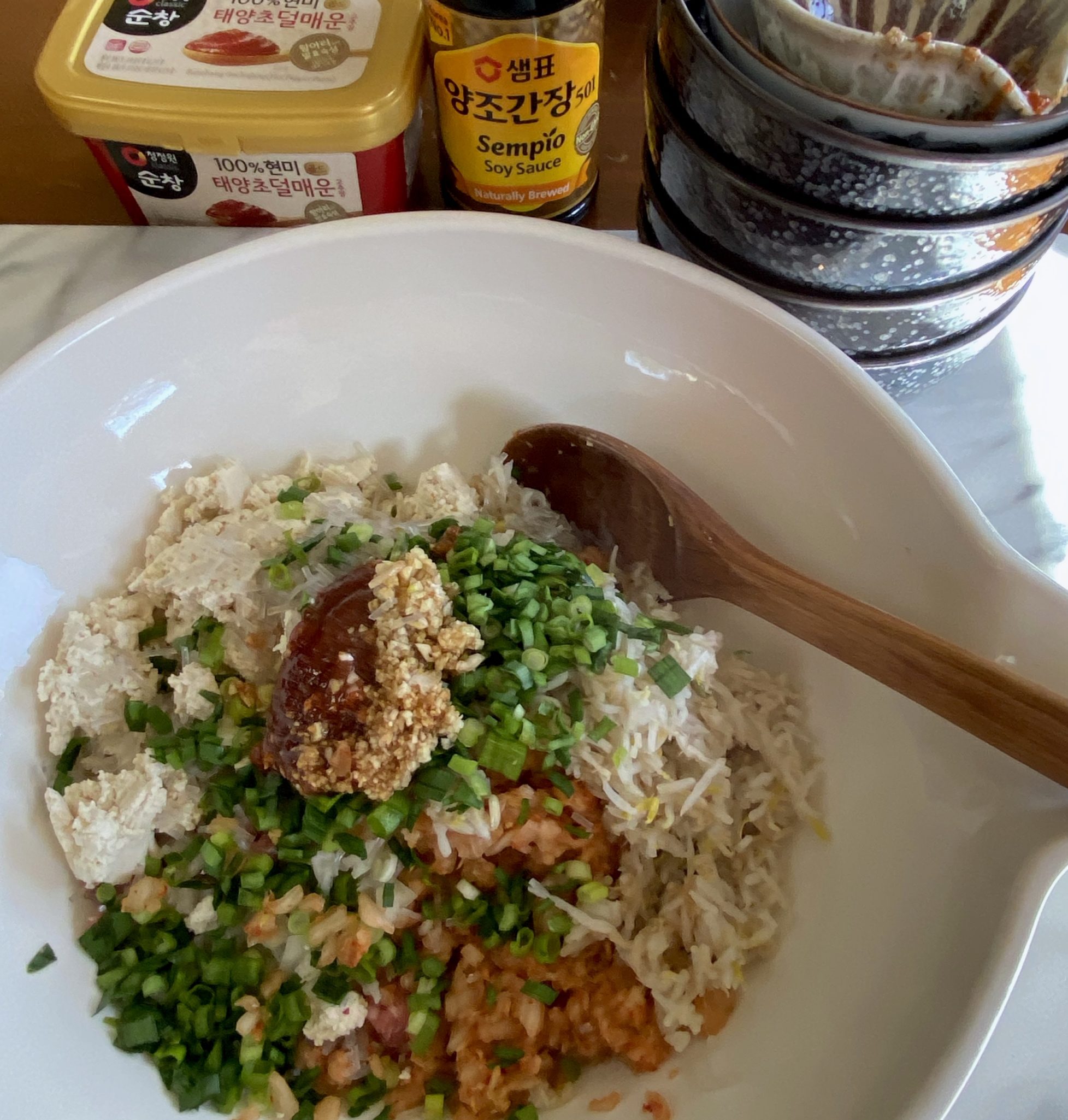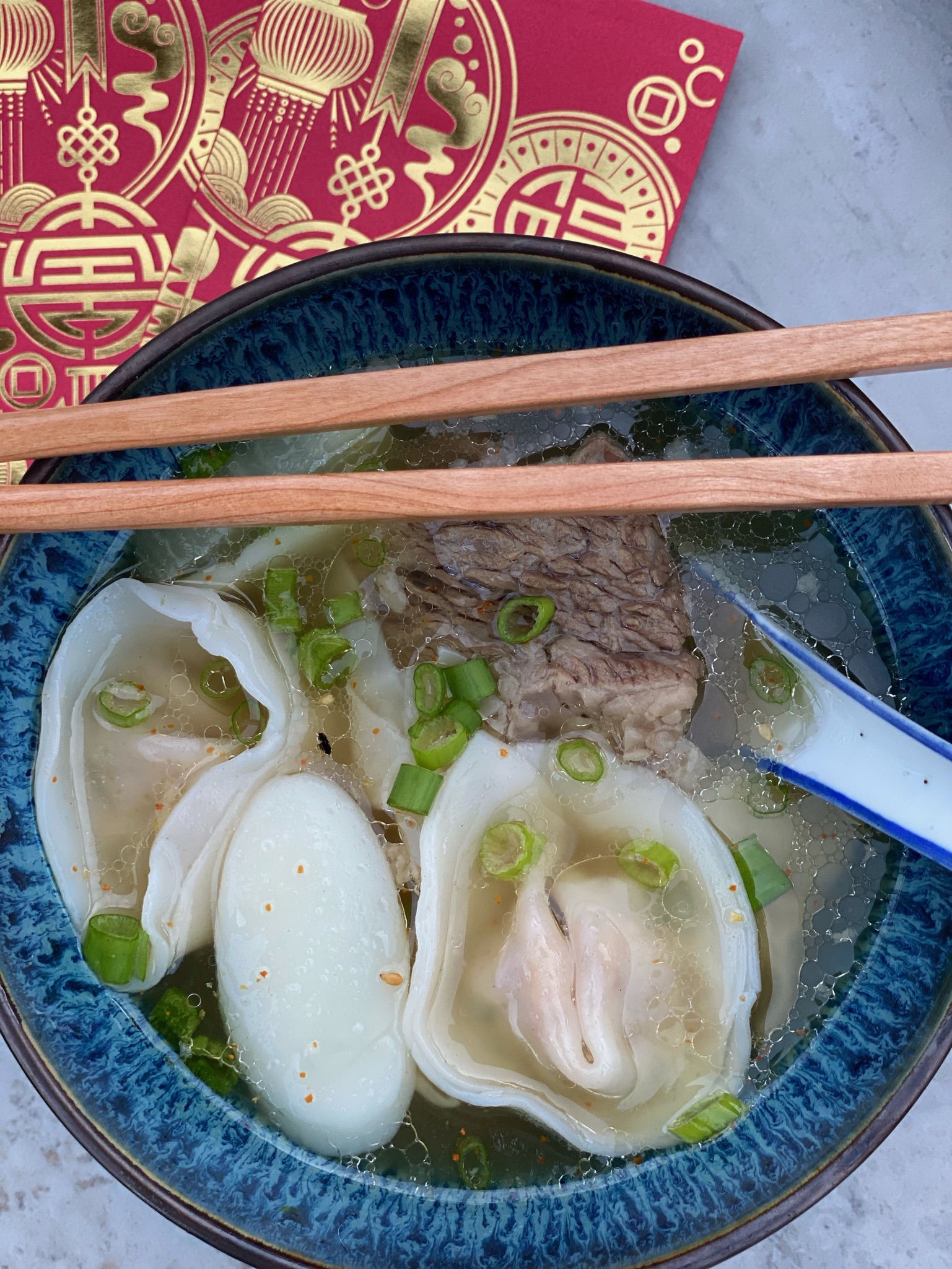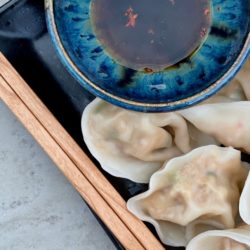
Mandu-Welcome to MDU-Marvel-ous Dumpling Universe
I love dumplings, right up there with bowl food, soul food. In my world, Jeopardy has a couple of categories including “Things You Eat with a BOWL and SPOON” and “Dumplings of the World”. It seems every culture has a dumpling that defines comfort, soul food. Ravioli, Momos, Mandu, Gyoza, Pelmeni, Pierogi…the list is endless. Dumplings are a labor of love, and labor-intensive. Maybe that’s why dumpling making is a joint effort with family and friends on occasions that bring us all together. Despite Covid, we did manage to have a small dumpling-making session to usher in the Lunar Year of the Ox (immediate family only and outside).
Bittersweet Gathering
Every year for the past too many to count years I look forward to New Year’s Day celebrations with family and friends. I pack up a tray of holiday cookies and head to my brother’s for their annual New Year’s celebration which includes making mandu of course.
The kitchen table is set up with bowls (more like vats) of mandu filling and stacks of wrappers surrounding the bowls. Everyone takes a shift wrapping mandu. It’s a lively table, as everyone chatters away while folding mandu. The folded mandu are lined on trays sprinkled with cornstarch, like little sentinels waiting for their marching orders on a winter’s day. Some are destined for the pot of boiling water on the stove-immediate gratification, while the rest are loaded into freezer containers for everyone to take home.
I look forward to seeing family and friends that I don’t see very often. We pick up right where we left off the previous year. Catching up on the comings and goings, the kids, vacation highlights, reconnecting as if it were only yesterday we last saw each other. This is what I miss most from this past holiday season due to COVID isolation.
My brother canceled their annual New Year’s Day celebration due to COVID and then my sister-in-law’s mother passed away. It was during the holidays we would normally see her. My kids affectionately called her Halmoni (grandmother in Korean) mimicking their cousins. Born in Seoul, she came here to complete her medical training to be a pediatrician. She was part of a generation of remarkable woman that defied the odds and norms of her time. What I will remember most was her kindness and generosity of spirit. She always greeted you with a warm embrace and a beautiful smile. Her soft-spoken demeanor and gentleness belied the tenacity and determination she must have had to accomplish all that she did.
I thought of her as I prepped the filling for our own little New Year’s Dumpling-making session. I was immediately transported to my brother’s kitchen table, sitting with her and my mom, laughing, talking, and of course, wrapping mandu. She will be sorely missed.
We made two fillings, Mom’s Won Tons and Kimchi Mandu in the morning before our designated wrappers arrived (my kid). I started with mom’s tried and true wonton filling, a delicious mixture of shrimp, pork, water chestnuts, scallions, shiitake mushrooms, and seasonings. We use it not only for wontons but for fried egg dumplings, and as a filling for steamed squash or tofu. Skip the wonton wrapper and make meatballs for a tasty addition to soup or congee. Mom’s universal filling, the best.
I adapted the recipe for Kimchi Mandu from Korean Bapsang (my go-to Korean food site). I wanted a vegetable-centric filling that still had a bit of meat in it. This one was perfect. Not gonna lie, the filling is not a walk in the park and requires time to make. My advice is to make the mandu filling the day before.
For Kimchi Mandu, you will need the following: Firm tofu, dried sweet potato noodles, ground beef or pork or combo, onions, scallions, kimchi, bean sprouts and seasonings. Gather the ingredients and then the “fun” begins. Blanch bean sprouts, drain & smoosh tofu, rehydrate & cut noodles, dice green & yellow onions, mince ginger and garlic, shred kimchi and THEN, add to meat.
WHEW, lots of prep but so WORTH IT. Wontons and mandu freeze beautifully so all this work will give you a freezer full of quick, last-minute, delicious meals.
Folding Mandu in the Cartoon Universe
That’s a Wrap
Most of the time (and I mean MOST), we use commercial wrappers for our dumplings. Look for round wrappers for potstickers or mandu at Asian markets. A link to the Oregonian shows 6 ways to fold dumplings! If you are feeling ambitious do try to make your own. It’s pretty easy and requires only 4 ingredients. The wrappers are flavorful, tender with a nice snap like hand-pulled or knife-cut noodles. Totally worth the effort (homemade wrappers get the “nood” here).
Serve mandu, steamed with a dipping sauce, fried, or boiled. A steaming hot bowl of Galbitang (Beef Short Rib Soup) with mandu and rice cakes ushered in the new year for us. Delish!
Kimchi Mandu (Kimchi Dumplings)
Ingredients
Filling:
- 2 ounces dangmyeon sweet potato starch noodles soaked in warm water for about 30 min or until soft
- 1 cup packed finely chopped kimchi
- 8 ounces tofu firm
- 10 ounces mung bean sprouts sukju namul (숙주나물)
- 1/2 medium yellow onion minced
- 2 to 3 scallions diced, or use garlic chives
- 10 ounces ground pork or beef or blend of both meats
Seasonings for Filling:
- 1 tablespoon minced garlic
- 1 teaspoon finely grated ginger or juiced
- 1 tablespoon sesame oil
- 2 tablespoon soy sauce
- 1 tablespoon gochugaru adjust to taste
- salt to taste about 1/4 teaspoon
- pepper to taste about 1/8 teaspoon
Wrappers
- 40 dumpling wrappers slightly thick
Instructions
- Drain and squeeze water out of tofu. Using a cheesecloth or kitchen towel to squeeze water out.
- Finely chop the kimchi and squeeze out excess liquid by hand. Use older kimchi which has more flavor.
- Blanch the bean sprouts in boiling salted water (2-3 min) should still be crisp, drain, chop and squeeze out water.
- Finely chop the noodles. Finely chop the onions and drain off excess water. Finely chop the scallions or garlic chives.
- Combine all the filling ingredients in a large bowl. Mix well by hand. Stir in one direction to filling feels a littlle sticky.
- Place one heaping teaspoonful to a tablespoon of the filling on a wrapper. Wet the edges of the wrapper with water or egg wash and seal tightly, push the air out with your fingers. shape into a half-moon shape. Then, bring the two ends together, apply water or egg wash to one end and press tightly to create a round shape. Repeat this process until all the filling/wrappers are used.
- Kimchi mandu can be steamed for about 10 minutes in a steamer (12 minutes if frozen). Make sure to line the steamer with parchment paper or cabbage leaves to prevent mandu from sticking. You can also boil the mandu. Place dumplings in boiling water, bring it back to boil, adjust heat so it keeps a nice boil. When the dumplings float to the surface they are almost ready, boil another 30 seconds and remove from pot.
- Note, you can cook a tablespoon of filling by boiling or frying to taste for seasonings.
